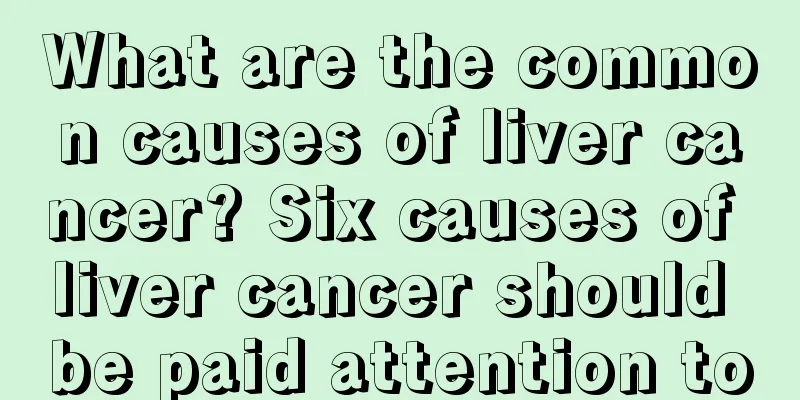Is carbon monoxide poisoning painful? The symptoms are like this

|
Speaking of carbon monoxide poisoning, I believe everyone is familiar with it, because we often see it on the Internet or on TV, and some people have even encountered it among their relatives and friends. But is it painful to talk about carbon monoxide poisoning? But few people know it. In fact, carbon monoxide poisoning is divided into three stages according to different degrees. The symptoms in each stage are different, so the degree of pain is also different. 1. Symptoms of carbon monoxide poisoning What are the symptoms of carbon monoxide poisoning? Because the degree of carbon monoxide poisoning is different, the symptoms of carbon monoxide poisoning are also different. 1. Lightweight The poisoning time is short, and the carboxyhemoglobin in the blood is 10%-20%. The early symptoms of poisoning include headache, dizziness, palpitations, nausea, vomiting, weakness in the limbs, and even brief fainting. The patient is generally conscious and the symptoms disappear quickly after inhaling fresh air and leaving the poisoned environment, and generally no sequelae are left. 2. Medium If the poisoning lasts a little longer, carboxyhemoglobin in the blood may account for 30%-40%. In addition to mild symptoms, collapse or coma may occur. The skin and mucous membranes take on the cherry red color characteristic of gas poisoning. If rescued in time, the patient can wake up quickly and recover completely within a few days, generally with no sequelae. 3. Heavy If the disease is discovered too late, too much gas is inhaled, or high concentration of carbon monoxide is inhaled in a short period of time, the blood carboxyhemoglobin concentration is often above 50%. The patient will be in a deep coma, various reflexes will disappear, he will suffer from incontinence, cold limbs, low blood pressure, rapid breathing, and will soon die. Generally, the longer the coma lasts, the worse the prognosis, and it often leaves sequelae such as dementia, memory and comprehension loss, and limb paralysis. 2. First aid measures for carbon monoxide poisoning I believe everyone knows that when we are poisoned by carbon monoxide, we must perform first aid. How to treat carbon monoxide poisoning? 1. Transfer patients Immediately transfer the patient to a well-ventilated place, lay him/her flat, loosen his/her clothes, clear secretions from the mouth and nose, keep the airway open, and keep warm. 2. Rapidly correct hypoxia Patients with mild to moderate poisoning can use high-flow oxygen inhalation (5-10L/min) through a mask or nasal cannula. Patients with severe poisoning should use hyperbaric oxygen therapy as soon as possible to increase the oxygen partial pressure and blood oxygen content, correct tissue cell hypoxia, promote the dissociation of carboxyhemoglobin, accelerate carbon monoxide permeability, prevent and treat cerebral edema, promote the awakening of comatose patients, and accelerate the recovery of nervous system function. 3. Prevent and treat cerebral edema 200-400 mg of hydrocortisone or 10-30 mg of dexamethasone or 250 ml of 20% mannitol can be used for intravenous drip. At the same time, fresh photon blood can be transfused, which will help improve tissue hypoxia. 40mg of adenosine triphosphate, 200u of coenzyme A, 30mg of cytochrome C, vitamin B complex, vitamin C, etc. can be used to promote the recovery of brain cell function. 4. Symptomatic treatment Respiratory stimulants can be used in case of respiratory failure. Physical cooling can be used for those with high fever. Wear an ice cap on the head and place ice bags on the body surface to keep the body temperature at around 32°C. If chills occur during the cooling process or the cooling effect is not good, hibernation drugs can be used. For patients with frequent convulsions, diazepam 10-20 mg intravenous injection is the first choice. |
<<: The prevention method of carbon monoxide poisoning is like this
>>: What are the treatments for inferior wall myocardial ischemia
Recommend
The difference between soft-shelled turtle, tortoise and turtle
The difference between soft-shelled turtle and to...
Mung bean and kelp soup taboos
It is well known that kelp is rich in iodine. Peo...
Can brown sugar help sober you up
If a person drinks too much, the alcohol containe...
How to wash off menstrual blood on underwear
Many adolescent girls will accidentally get blood...
What are the methods of oil fume cleaning device
I believe that every household now has a range ho...
What fruits can I eat with mumps
Mumps is a common clinical disease that may occur...
How much does minimally invasive surgery for bladder cancer cost
Bladder cancer not only has a great impact on the...
How long can a person with esophageal cancer usually live
The survival time of esophageal cancer varies gre...
Will there be complications if I don't retain the purpose of a large amount of enema
Talking about enema will make people horrified, b...
Which kind of folic acid is better to take during pregnancy
Pregnant women need to supplement a variety of nu...
The efficacy and function of sandalwood mosquito coils
Now the weather is getting hotter and hotter, man...
Difference between skin cancer and acne
Everyone knows that skin diseases are serious. Th...
What happens if the stool is black?
The feces are actually black, which makes many pe...
My neck is pinched and it hurts to swallow
The pain when swallowing is caused by the neck be...
Can VE be used in facial cream and what are the effects of VE
VE can mostly be used in facial creams, usually t...









